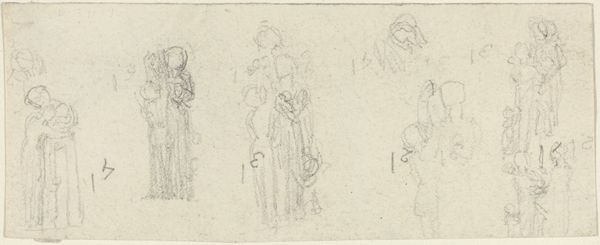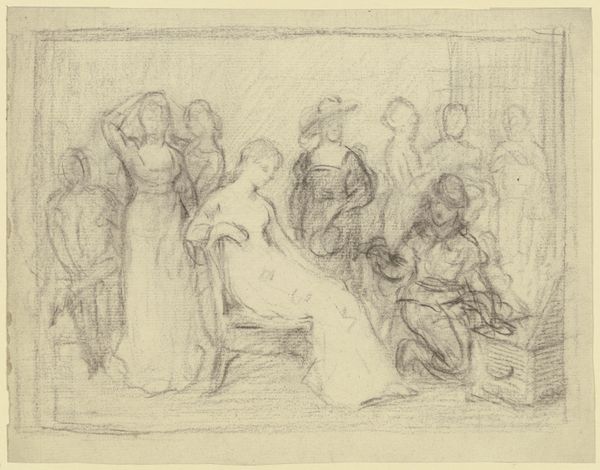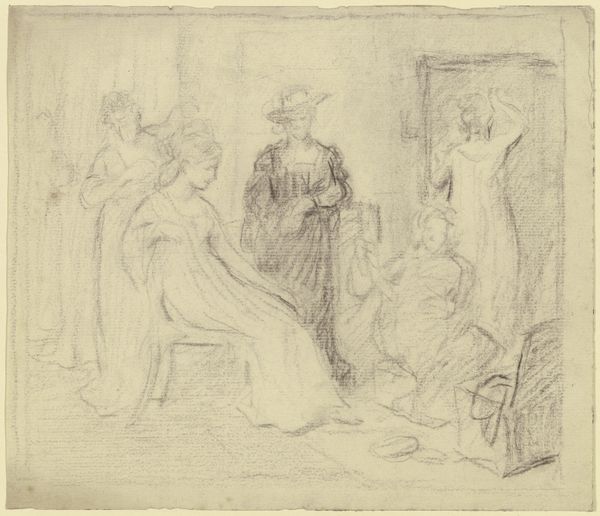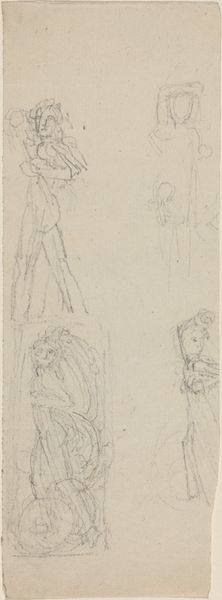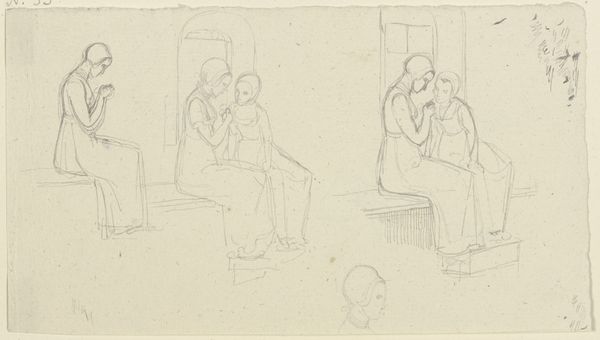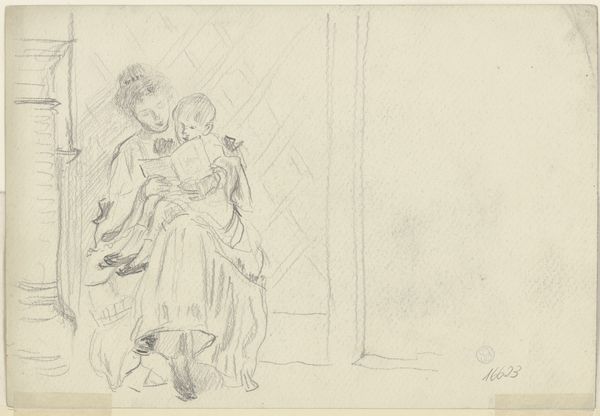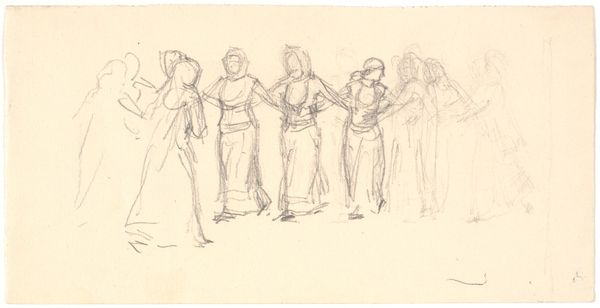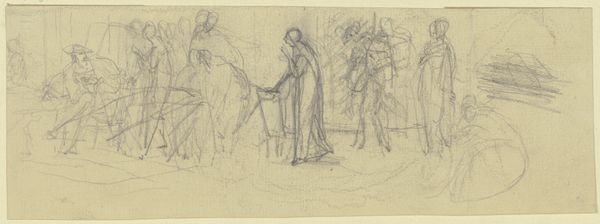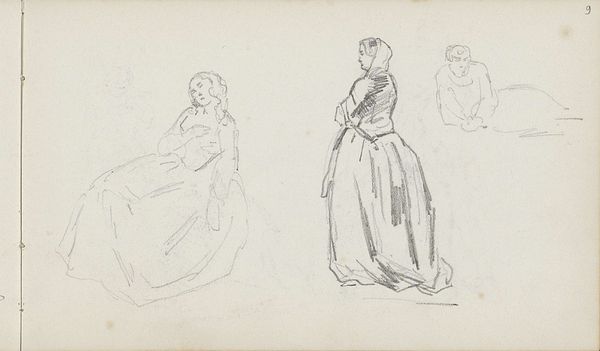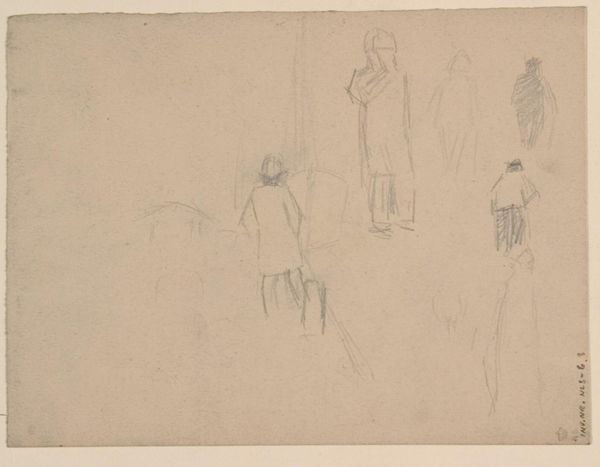
drawing, pencil
#
drawing
#
figuration
#
pencil
#
academic-art
Dimensions: overall: 5.6 x 13.7 cm (2 3/16 x 5 3/8 in.)
Copyright: National Gallery of Art: CC0 1.0
Editor: Here we have John Flaxman’s "Three Groups of Figures (Parents and Children?)," a pencil drawing. There's a definite sketch-like quality. The figures are not finely detailed, yet there is a distinct presence. What strikes me is the almost classical arrangement, yet the ambiguity in the line work. What do you see in this piece? Curator: Flaxman has chosen to depict the human form not as a photographic imitation, but through the distilled essence of line. Note how each group, while sharing the basic compositional elements, occupies its own discrete space on the paper. The lines, are they continuous or broken? Where do they define form and where do they suggest movement or emotion? Editor: I notice the variations in line density. Some areas, like the drapery, have denser shading. Others are just outlines. Is that a conscious way of directing the viewer's attention? Curator: Precisely. It serves to highlight the contrast and, moreover, create the illusion of depth. Flaxman, with these subtle variances in tonality, uses line weight to convey information. Are you finding these figures express emotions and relationship? Editor: Definitely. Despite the simplicity, I perceive intimacy in the closeness of the figures. It almost feels like looking at classical friezes. I'm beginning to notice how strategically arranged they are, with distinct spatial relationships and dynamic compositions. Thanks to you I can say that there is intentional complexity even within simplicity. Curator: An insightful observation, well, the relationship between line and form becomes clearer and allows one to appreciate Flaxman’s sophisticated artistry and you too have brought new ways of viewing this art.
Comments
No comments
Be the first to comment and join the conversation on the ultimate creative platform.
